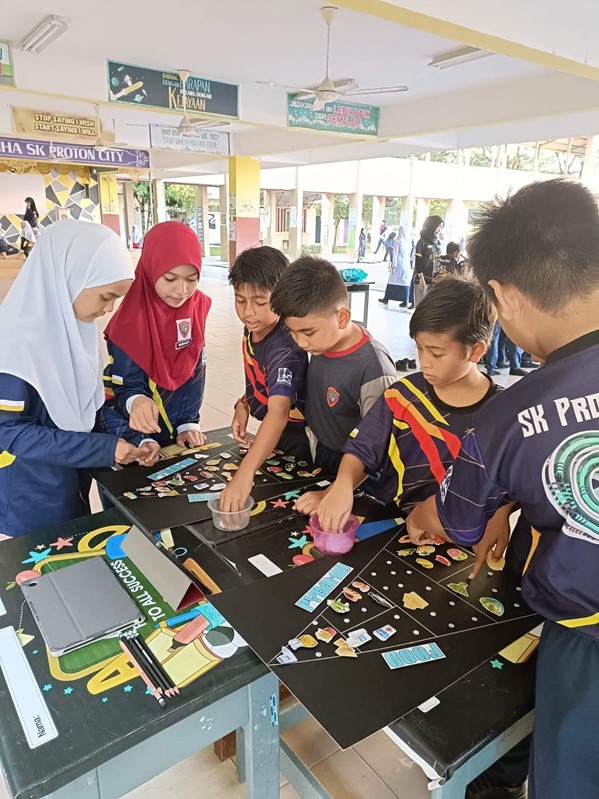How much do you know about blood disorders?
Have you ever fainted under a hot sun? Do you have pale lips? These might sound familiar to you. You might likely have anaemia or should take an iron supplement.
However, iron supplements are effective only for people with iron deficiency, including iron deficiency anaemia. In other words, other types of anaemia cannot benefit from iron supplements but worsen individual well-being since iron cannot be secreted from the human body. Rather, it will deposit in our organs, which might eventually lead to organ failure. So be cautious of iron supplements!
So, what is anaemia? A simple understanding of the structure of red blood cells and their function will shed some light on this.
In our bloodstream, plenty of red blood cells in round and biconcave shapes enable them to facilitate oxygen transportation and move smoothly through our blood capillaries (the smallest of the body’s blood vessels).
A single red blood cell comprises millions of haemoglobin, an important oxygen carrier. Hemoglobin gives the red pigment in blood. Haemoglobin comprises two alpha- and two beta-globin proteins, each with a haem group (iron complex of protoporphyrin). These two types of globins fold together into tetramer chains to form functional haemoglobin.
Haemoglobinopathies
Haemoglobinopathies are a group of inherited blood disorders affecting red blood cells to transport oxygen from the lungs to all body parts. Flexible, round, biconcave-shaped red blood cells are crucial to carrying oxygen to all body parts. However, abnormally sickle-shaped (C-shaped) red blood cells will cause sickle cell anaemia.

Furthermore, any faulty production of these globin chains may give rise to thalassaemia. For example, the faulty production of the alpha-globin chain will lead to alpha thalassaemia; if the faulty production of the beta-globin chain, it will lead to beta thalassaemia. Both alpha and beta thalassemia can cause various degrees of anaemia, but the severity and specific symptoms can differ. The severity of these conditions depends on the number of affected genes and the specific genetic mutations involved.
Iron is an essential mineral to our body, as it plays an important role in regulating bodily function, especially as an oxygen carrier in red blood cells. If there is a shortage of iron supply in our body, it will lead to iron deficiency anaemia.
In general, anaemia is characterised by reduced haemoglobin levels, leading to anaemic symptoms, such as fatigue and dizziness, and it disturbs cognitive development and productivity in the workplace.
Sickle cell anaemia
Sickle cell anaemia is an inherited red blood cell disorder in which there aren’t enough healthy red blood cells to carry oxygen throughout our body. This difference in cell shape happens when there is a gene defect or mutation in the beta-globin gene.
The flexible, round red blood cells normally move easily through blood vessels. The red blood cells are shaped like sickles or crescent moons in sickle cell anaemia. The sickle cells die early, which causes a constant shortage of red blood cells. Also, these abnormal red blood cells become hard and sticky, and when they travel through small blood vessels, they get stuck and clog the blood flow.
Thalassaemia
Thalassaemia is a group of inherited blood disorders. It is characterised by a reduced amount or absence of one or more globin chains.
Healthy people have all pairs of alpha- and beta-globin genes working hard to produce the required alpha- and beta-globin chains throughout their lives; if one or more of the genes do not work or are defective, the individual will have thalassaemia.
Since haemoglobin comprises two alpha-globin chains and two beta-globin chains, any defects of the alpha-globin chain, coded by alpha genes located on chromosome 16 of the human DNA, will result in alpha thalassaemia. On the other hand, any defects in the beta-globin chains, which are produced by beta genes on chromosome 11, will lead to beta thalassaemia. A simple illustration of how alpha thalassaemia happens is shown below. A common beta-globin gene mutation in Malaysia is Haemoglobin E (HbE).
Iron deficiency anaemia
From our daily meal, approximately 1-2 milligrams of dietary iron are absorbed by the small intestine and carried by transferrin (iron transport protein) to transport to bone marrow for haemoglobin. Excess iron is carried by ferritin (iron storage protein) and stored in the liver. It is readily released when there is a need for red blood cell production.
Iron deficiency can be divided into two major stages: iron depletion and iron deficiency erythropoiesis (the red blood cell production process). Iron depletion is a condition with reduced iron storage, but adequate iron supply maintains normal bodily function. Iron deficiency can be detected through a blood test with red blood cell indices. Red blood cell indices are a set of parameters used to describe the size, shape, and haemoglobin content of red blood cells. In the blood test, iron depletion shows slightly lower ferritin levels but normal haemoglobin levels.
However, iron deficiency erythropoiesis is a condition with a lack of iron supply from iron stores (nutritional factors) or faulty iron transport protein (due to genetic factors) to transport iron to bone marrow for red blood cell production. In the blood test, iron deficiency erythropoiesis shows lower ferritin levels than iron depletion while maintaining normal haemoglobin levels. Iron deficiency can progress into anaemia if it lasts long without treatment. Iron deficiency is one of the most common nutritional disorders, mainly occurring among young children, pregnant women or those who have periods, vegetarians who don’t consume enough iron-rich foods and frequent blood donors.
The clinical symptoms of iron deficiency anaemia and other haemoglobin-related diseases are similar, such as anaemia and fatigue. Thus, misdiagnosis is common. Therefore, it is important to perform a blood test to know more details on the red cell indices to differentiate between iron deficiency anaemia and other haemoglobin-related diseases before taking action.
According to the World Health Organization (WHO), iron deficiency anaemia is the most common cause, affecting almost two billion people worldwide, including Malaysia.
In essence, a plethora of information can be found in our tiny red blood cells. These specialised cells with unique properties and amazing functions form an integral part of the blood circulatory system in our body. We should never underestimate the “power” of the red blood cells in our body, as any defects or abnormalities in them will result in a chaotic environment in our highly regulated human body system.
Hence, the next time you hear the term “haemoglobin havoc”, you know what it means! By reading this article, you might save yourself and your loved ones from anaemia with the necessary prevention and useful information.
Note: Dr Lee Tze Yan is a senior lecturer and an active researcher at Perdana University. A biomedical scientist by training, he holds an MSc in Molecular Biology and a PhD in Molecular Medicine from Universiti Putra Malaysia. He is interested in science policy and is also an active Young Scientist Network (YSN-ASM) member. He is the honorary advisor for the 7th National Biomedical Science Gathering Malaysia (7th NBSG).






